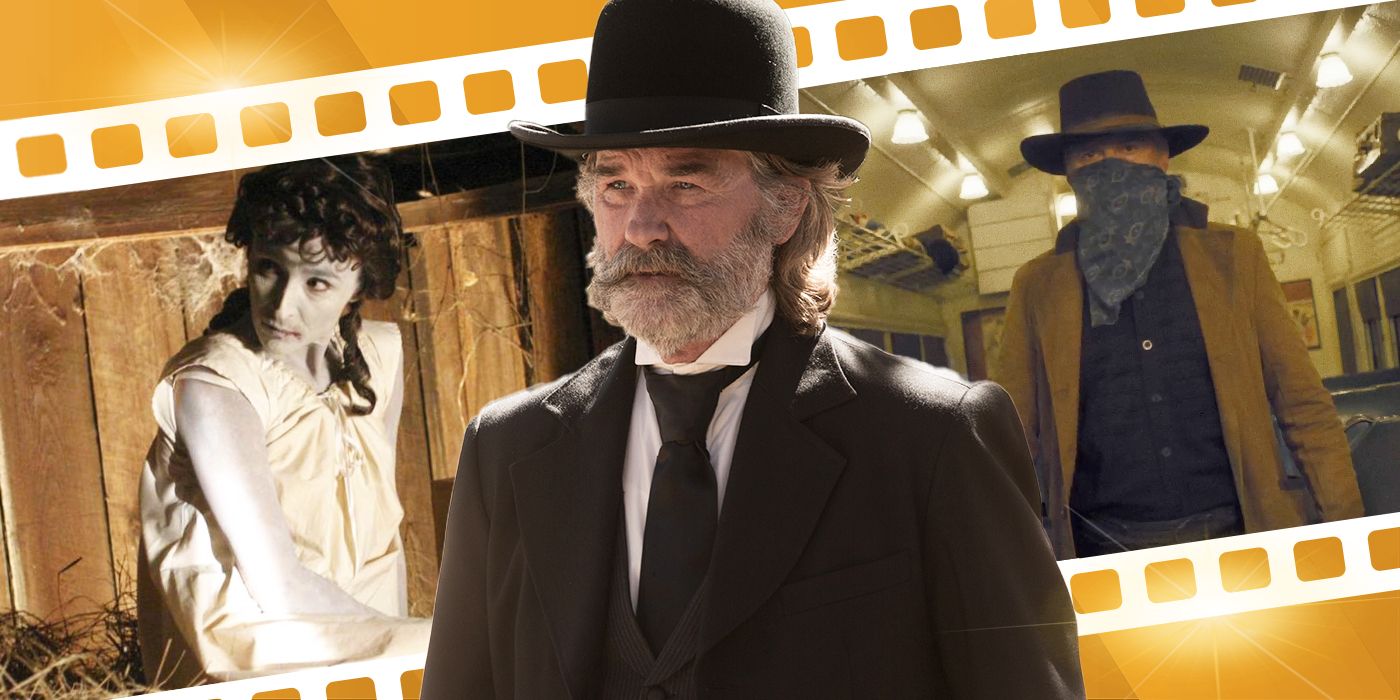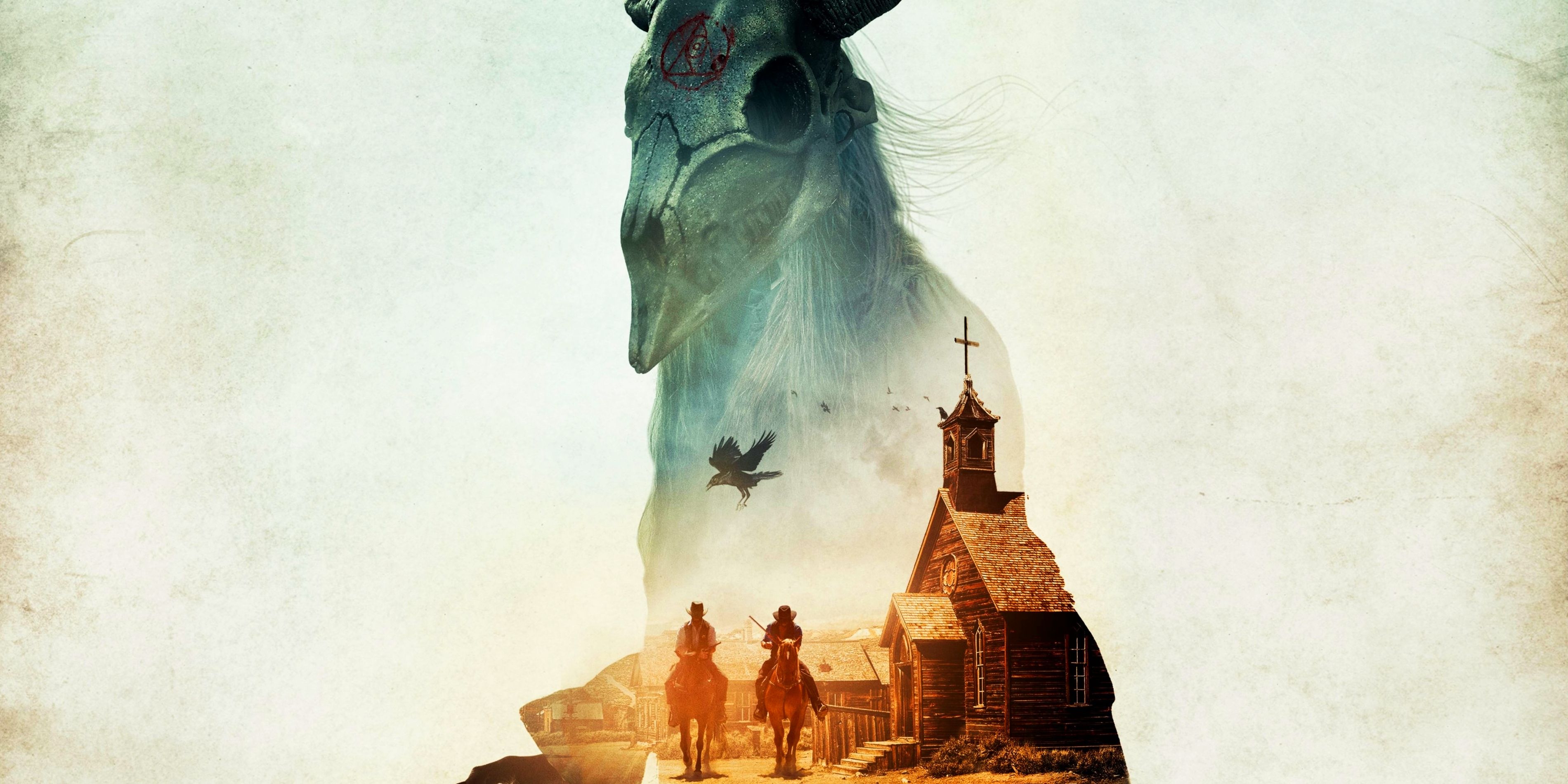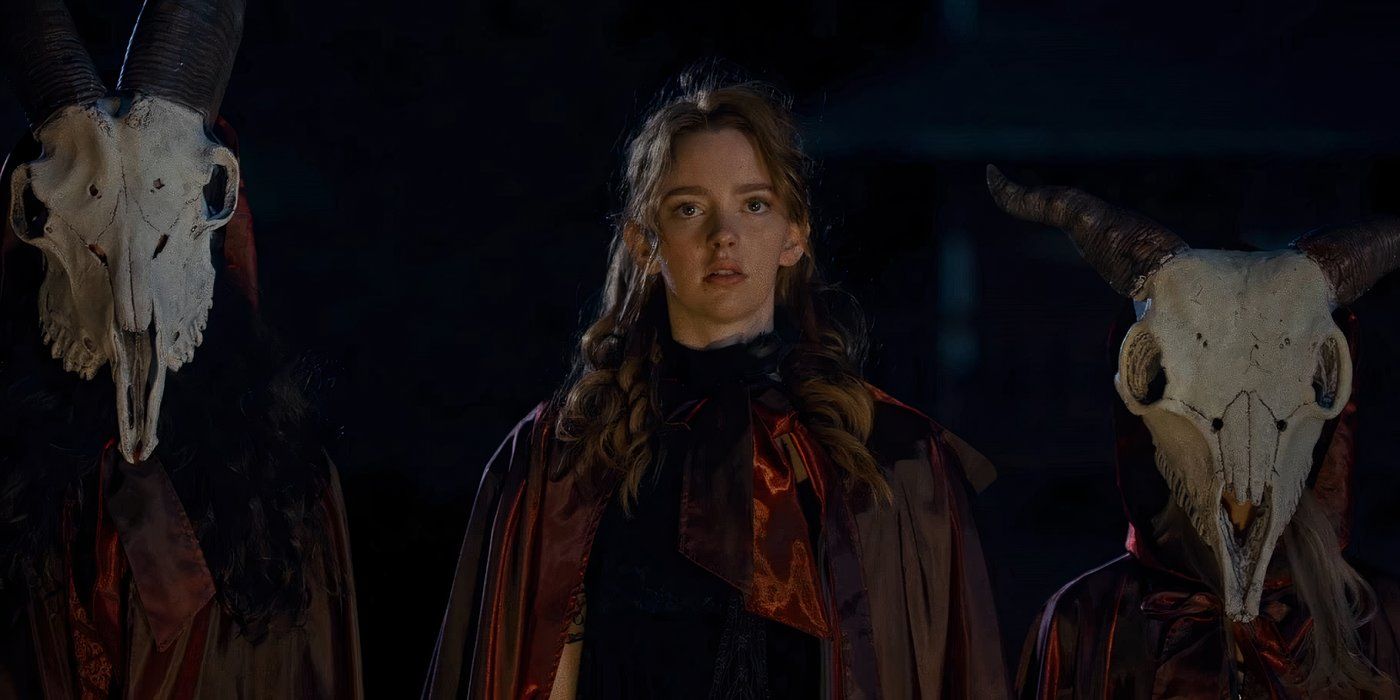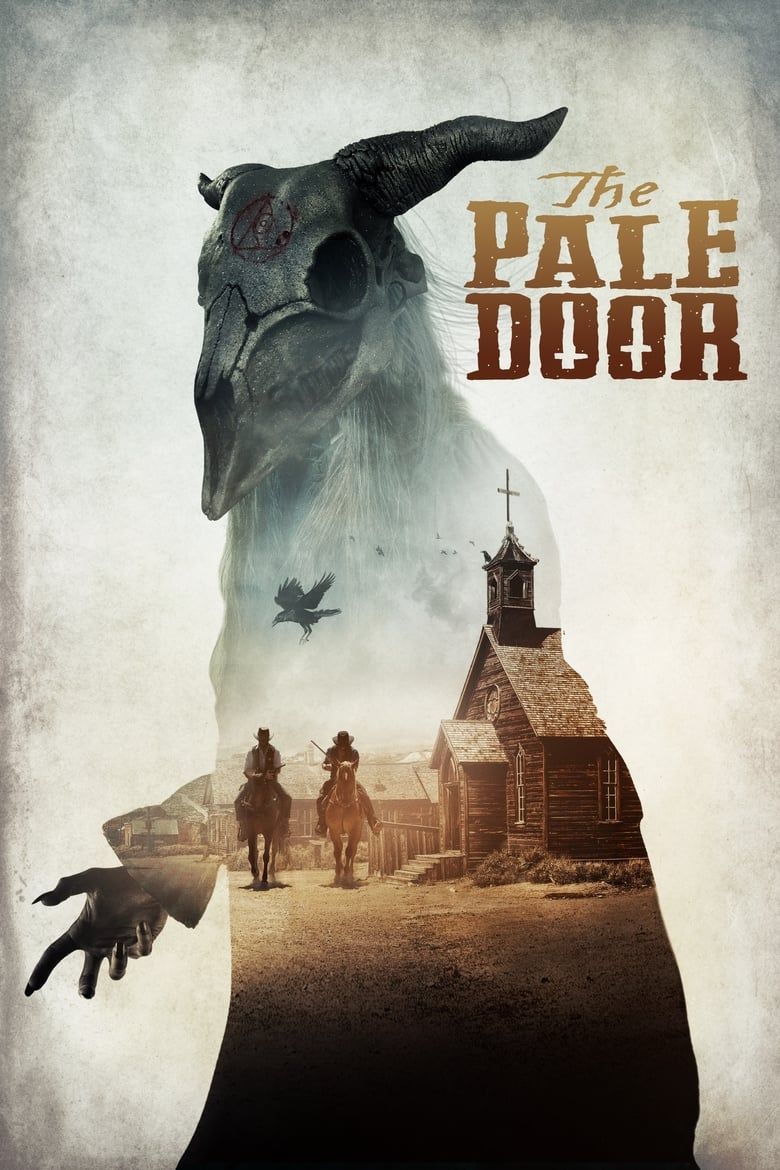Western horror is a criminally underutilized genre blend. The scorching sun hanging over the backdrop of the Old West can prove bleak and hostile, making this extreme environment the perfect stage for grittier horrors. This was clearly the thought process behind Aaron B. Koontz’s 2020 The Pale Door. Following brothers Jake (Devin Druid) and Duncan (Zachary Knighton), members of the outlaw Dalton gang, in the wake of a train heist, The Pale Door takes a surprising turn into supernatural horror. This pivot from a stereotypical cowboy flick into insane witchcraft is smooth and makes for a riveting watch.
How ‘The Pale Door’ Uses Its Mixed Genres to Elevate Its Story
Train heists are a Western staple, and they usually go wrong. The first act of The Pale Door is no different, dedicated solely to a heist that quickly goes pear-shaped. As the outlaws scramble to find help for their injured leader, they find themselves at the mercy of a coven of witches. Revealed to have been burned at the stake, the witches demand one of the men stay with them, and from there, these cowboys have to fight for their lives to flee. This genre switch-up feels reminiscent of From Dusk Till Dawn, and fans of the Rodriguez film will likely love The Pale Door for the similar structure and dark comedy. The Dalton gang is composed of classic outlaw characters. There are the brothers who the film is primarily concerned with, acting as the beating heart of The Pale Door, but also Lester (Stan Shaw), the surrogate father, Wylie (Pat Healy), the brains of the operation, and Dodd (Bill Sage), the rude cowboy. Everyone's performance is great, even when the dialogue falters into cliché, keeping the scenes grounded. When the horror picks up, Druid, Knighton, Shaw, Healy, and Sage are able to convincingly portray the terror of the supernatural, while also maintaining that swaggering confidence native to the outlaw stereotype.

The 10 Most Underrated Western Horror Movies, Ranked
These Western horror movies deserve far more love from thrill-seeking audiences.
The horror of The Pale Door is as omnipresent as the Western aspects of the film, if subtler at times. The film opens with a burst of violence, foreshadowing the gore to come later. The sparseness of the scrubland sets a tense tone, and the continued noting of isolation through wide shots of the land creates a sense of helplessness. When trouble arrives, there is no one around to help the men. The trouble these men find is not for the faint of heart. The Pale Door does not shy away from blood and guts, so for any fans of outlandish kill scenes, this is the film to watch! The conflict boils down to cowboys versus witches. It’s a brilliant idea, and the special effects aptly convey how insane the face-off is. The magic feels surreal when set in contrast to actual guns. The spells themselves have a grungy feel to them, rooting them in the Western tradition. There are no jets of red light like in Harry Potter, rather the magic manifests as visceral and nasty, often a black ooze or sludge. These creative decisions keep the film aesthetic cohesive, despite the varied genre play.
The Witches of ‘The Pale Door’
Witches are a horror staple for a reason: they’re fun villains. Whether they’re hunched-over hags or wily seductresses, witches always have a flare of drama that lights up the screen. Witches are such fan favorites that they often star as main characters in non-horror media. The witches of The Pale Door build on the various witch tropes to create a coven that feels specific to this film. There is the seductress angle, with the witches first appearing as brothel workers. While not the most nuanced take, the specific backstory they are given has a depth that fleshes out their characterizations and lore. Much of the horror of The Pale Door is tangled up in what was done to these women. Burned at the stake years ago, when the witches drop their youthful visages, they are burned and tortured. The burn makeup feels suitably agonizing to look at. The witches' skin is burned to a crisp, with skin leafing off and schisms revealing still-burning cracks. As the film blends its genres, The Pale Door also blends its inspirations for the witch coven.
The character design for the witches takes special consideration of the Western influences on the film. The witches first appear to the characters and the audience dressed in over-the-top brothel clothing, with frilly dresses and lace-up heels. Later, when they’re dressed in their coven garb, they have a more esoteric look. The women don animal skulls as masks. The animal skulls are such iconic pieces of Western imagery, but they’ve been repurposed for the witches rather than the outlaws. The witches believably feel embedded into their environment.
The Pale Door slipped under the radar upon release and has seen divided reviews. A gang of outlaws faces off against a coven of witches with nothing but their guns. A clever mash-up of Western and horror staples, The Pale Door is a breath of fresh air if the last few horrors one has seen were all sorority slashers or creature features.
Stream The Pale Door on Hoopla




